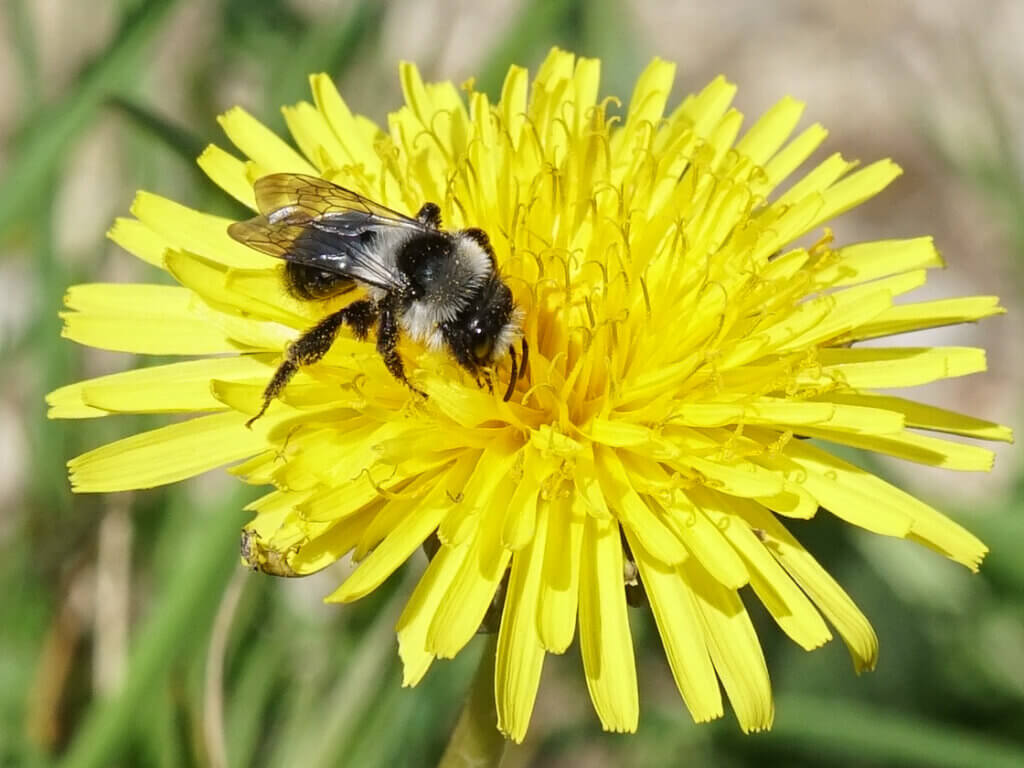
Social Distancing Week 8. Ashy Mining Bee.
Paul writes: One of the good things I’ve discovered about looking for insects closer to home are the unexpected finds. The Ashy Mining Bee ( Andrena cineraria) is my best this spring, it is a first for my local patch, OS square TA0978. It’s a bee that I usually only expect to see it if I’m a long way from home but I found this one on the field path next to my house.
There are very few black and white bees so the Ashy Mining Bee really stands out, especially on a nice bright background like a dandelion. This bee is a female, the two white bands and white face are unmissable. The males are still black and white but smaller and scruffier. It’s quite a common bee and occurs in most habitats. Distribution maps show it mainly in southern and central England. However insects are generally under recorded, so often when a distribution map shows nothing in an area it is because of a lack of records rather than the absence of the species.
Mining bees are solitary bees and like the name suggests excavate their nests, usually in loosely packed soil. Although the bees are solitary they can nest in large colonies. I’m hoping I can find the nest but haven’t had any luck so far.
[registration_form]
Lovely photo of a cracking bee Paul. This is a bee I never knowingly saw in all the years I lived in north Yorkshire. Last year I found it locally here in mid Wales but only saw a couple of bees. This year I found a few in the same place (within my exercise walk area) then to my surprise my partner found one in our poly tunnel, then a week later we found one exiting a burrow on a path through the garden. One of the few Andrena bees easily identified, I do wish I was better at bee identification.
I found some burrowing in an area of our garden recently. They were being targeted by another smaller bee or fly that I assume was a parasite.
Paul, you are making us all look at, and appreciate what is on our own doorstep. Great job.